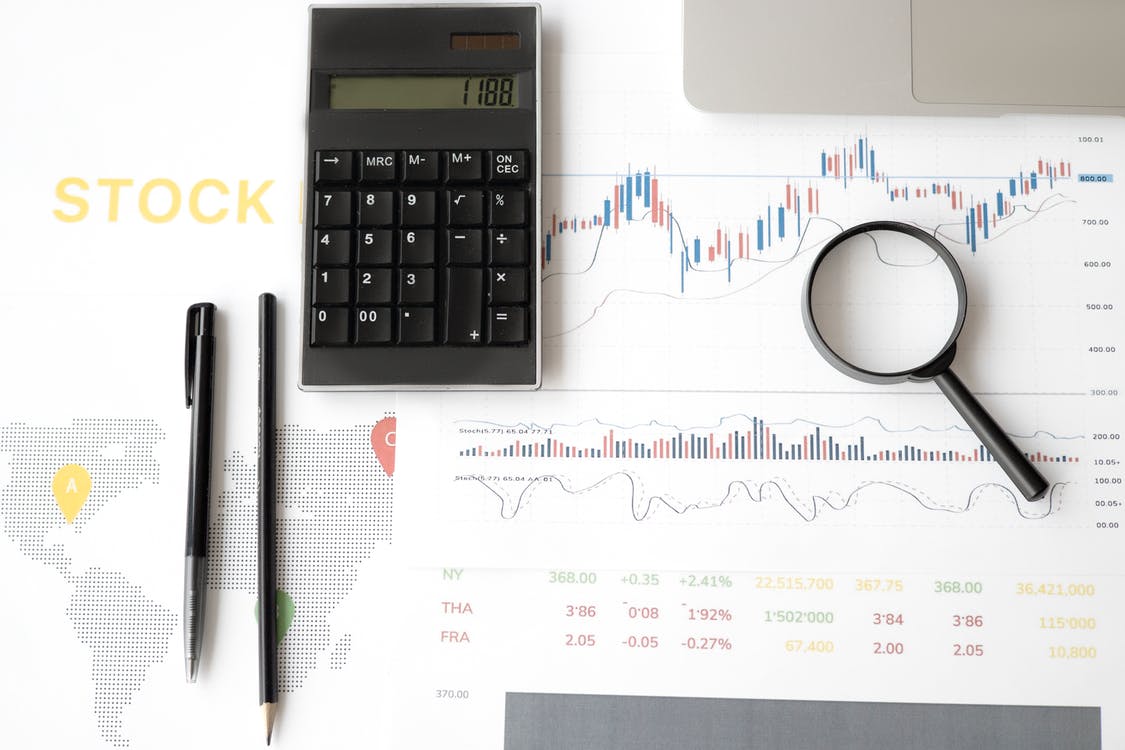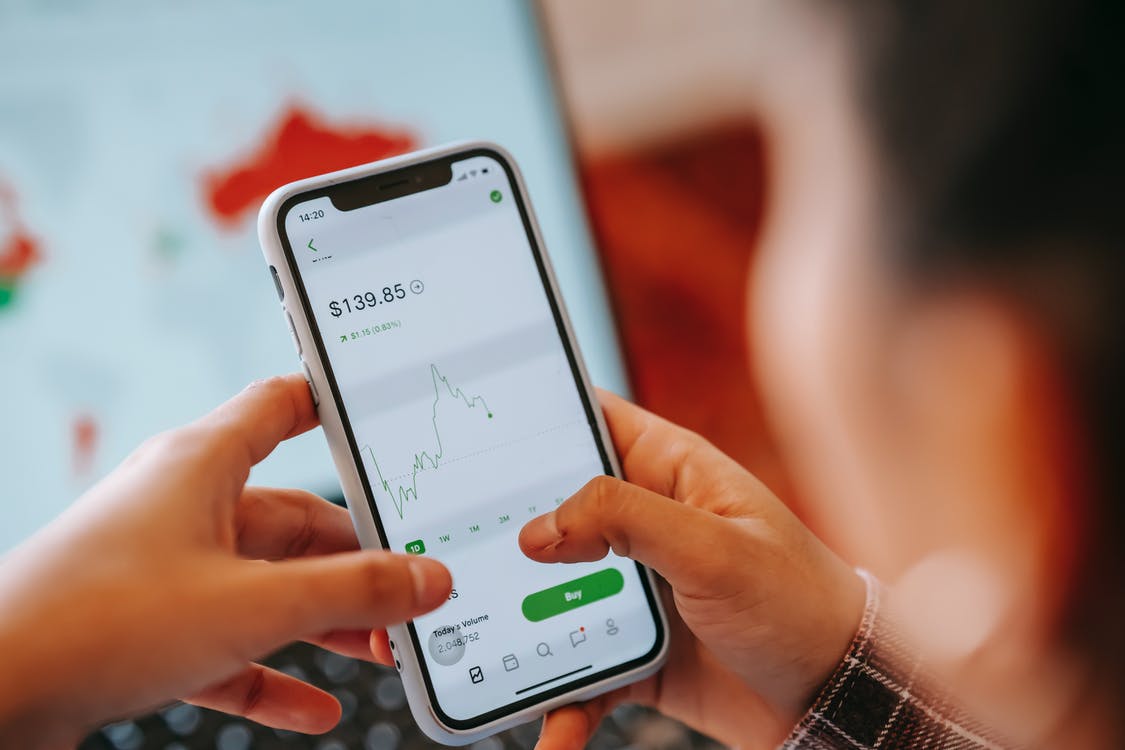Exchange-traded funds (ETFs) offer an investment opportunity for both passive and active day traders. They provide tax efficiency and diversity, making them perfect for a variety of traders with different trading objectives.
This guide explains the definition of ETFs, their pros and cons, and how to get started, including finding suitable ETFs for your trading portfolio. We also list the best ETF trading brokers in 2023.
How Do ETFs Work?
ETFs are baskets of securities bundled together into one package. These investment funds are listed on a stock exchange, such as the London Stock Exchange (LSE), giving them their namesake – “exchange traded.”
ETFs can contain almost any tradable asset, including stocks, shares, bonds, commodities, and cryptocurrency tokens like Bitcoin.
Funds holding high-value stocks, such as Tesla or Amazon, allow you to own a stake in numerous companies without the initial capital outlay that single stocks require.
ETF trading shares are governed by a process known as Creation and Redemption. An Authorized Participant is needed to “create” ETF shares by buying stocks from the index tracked by the fund.
It then puts them into the ETF, by exchanging them for shares representing equal value.
The AP sells these shares to investors.
The redemption process (i.e selling the ETF stake) effectively reverses the above-detailed steps.
Income Or Accumulation
ETFs will either have an income or accumulation asset class. Often, you’ll see the same fund has the option for the investor to choose one or the other.
The asset class determines how you’ll receive returns. Stocks and shares are regularly paying out dividends to their investors when, and if, they make a profit.
In an accumulation fund, this capital is reinvested for fund growth, meaning more stocks are bought. Whereas an income fund pays the dividends (either monthly, quarterly or annually) back to the fund owners.
ETFs Vs Index Funds
Index funds are a type of ETF that track the value of an underlying basket of trading securities. The baskets are usually indices, such as the S&P 500, NASDAQ or India 50.
If the value of the companies in these bundles increases, so does the value of the ETF.
In this way, owning a share in an ETF is essentially speculating on the strength of an economy or market, rather than one company within the list. This makes it a seriously diverse trading investment.

Warren Buffet is famously a huge supporter of index funds, and is regularly quoted as saying they’re the ‘most sensible equity investment’ for most people since the return rate for beginners can beat those of even experienced stock traders.
ETFs Vs Mutual Funds
Trading mutual funds and ETFs are similar in that they’re both professionally managed investment funds.
However, a mutual fund is not necessarily traded on an exchange, an ETF always is.
The term ‘mutual fund’ is typically of American usage.
In other parts of the world, they go by different names: an open-ended investment company (OEIC) in the UK or an investment company with variable capital (SICAV) in Europe.
Cryptocurrency ETFs
Cryptocurrencies burst onto the scene in 2009 and have grown rapidly ever since.
Bitcoin helped pave the way for other cryptocurrencies, like Ethereum and Litecoin, as well as an increase in interest in blockchain, the ledger technology underpinning them all.
There are two types of blockchain ETF that can be traded to speculate upon the world of cryptocurrencies. The first kind will invest in companies that are dedicated to the development and advancement of blockchain technologies, whether specifically for cryptos or for application to business and other services.
Alternatively, you can trade crypto ETFs that directly invest in cryptocurrencies and exchanges through futures and options pegged to different token values or cryptocurrency products from external asset managers.
Types Of Fund
Some ETFs cover thousands of trading assets across a wide spectrum of industries. Others limit themselves to very specific verticals and fewer constituents.
Through an ETF, traders can gain exposure to scores of stocks and entire industries, or even countries, without the need to invest directly in its component parts. It is this diversification that is one of the core strengths of trading ETFs.
The types of funds available are:
- Equity ETFs – These track the value of a bundle of equities in an index.
For example, FTSE, NYSE Composite, or S&P 500. The fund will own shares in every company within that index, mirroring its value and therefore, tracking its rise and fall. They’re a great way to invest in an international economy. Top examples include the Invesco QQQ which tracks the NASDAQ 100 or the oldest surviving ETF, the SPDR S&P 500 (SPY). </li> <li><strong>Industry ETFs</strong> – These track an index associated with a specific industry/sector, such as fintech, infrastructure, real estate or agriculture. For example, the Vanguard Industrials ETF or the iShares S&P Healthcare Sector ETF are on the list. </li> <li><strong>Commodity ETFs</strong> – Since physical commodities are harder for retail investors to start trading, these ETFs are a great way to gain exposure outside of derivatives. Commodity ETFs use gold, silver, copper, nickel, wheat, coffee, or any other commodities as underlying assets. </li> <li><strong>Bond ETFs</strong> – These use corporate and government bonds, such as U.S Treasury ETFs, or those from Germany, UK, Australia or Japan. </li> <li><strong>Currency ETFs</strong> – These track indices associated with currency pairs, such as the EUR/USD or GBP/USD. </li> <li><strong>Leveraged ETFs</strong> – These funds hold leveraged financial derivatives, such as CFDs, futures and options. Since leveraged derivatives are more exposed, they’re typically more volatile and are therefore riskier than their more “conservative” peers. </li> <li><strong>Inverse ETFs</strong> – Adding an interesting twist to the ETF investing game, inverse ETFs gain or lose from shorting stocks.
They work by including those likely to decline in value. They then sell these shares and re-buy them at a lower price point. Famously, funds holding GME or AMC during the bull run suffered due to these short positions.

Pros & Cons
Whether ETFs are good or bad for your trading portfolio depends upon many factors. We’ve listed the advantages and disadvantages below.
ETF Advantages
- Diverse – ETFs are a more diverse investment vs individual stocks as they hold a multitude of assets. This means that risk is reduced since it is spread across the various companies’ balance sheets, making them (on average) a safer bet than a single stock.
- Tax Benefits – For UK investors, profits made from trading ETFs can be tax-free when bought through an ISA. An ISA (or individual savings account) is a vehicle that allows traders to invest up to £20k per year without any tax obligations on the profits. Many of the top ETF brokers, such as Hargreaves Lansdown (HL) and Vanguard offer this trading opportunity.
- Low Fees – Most ETF management is passive. This often means lower fees vs mutual funds which are primarily actively managed. An actively managed fund means a fund manager and staff are paid to run its strategy, aiming for – but not guaranteeing – profit in all market conditions.
- Asset Value Tracking – The price of an ETF follows the price of its underlying securities closely.
- Arbitrage quickly erases premiums and discounts.
- Derivative Trading – ETFs trade just like stocks, meaning that, through an ETF, one can also trade options and futures. They can also short the market and trade on margin.
ETF Disadvantages
- Too Narrow – In some cases, ETFs do not cover a wide enough range of constituents. By limiting themselves to large-cap stocks, they effectively deny investors access to growth opportunities created by small-cap companies.
- Leverage Increases Risk – On the other hand, diverse funds may contain leveraged financial derivatives. Leverage trading can boost investment returns, though the same goes for losses. Risk-averse investors should avoid leveraged funds, or at least carefully weigh them.
- Pricing – Long-term investors might not like active, intraday pricing.
- Low Yields – ETFs entail lower risk, but investors pay for that stability through lower dividend yields. In this regard, high performing individual stocks or stock baskets may trump ETFs.
- ETF Fees vs Individual Stocks – ETFs beat mutual funds cost-wise – hands down. When compared to individual stocks, however, they give up this edge. Unlike stocks, ETFs entail management fees, making them slightly more expensive.
- Spreads – Trading ETFs based on low-volume indices feature higher spreads.
Where To Find The Best ETFs
Most ETFs and index funds are invested through fund owners.
Examples of the most popular ETFs include Fidelity, ARKK, AJ Bell, and Charles Swab. Plus, since ETFs are traded on exchanges, they are accessible through retail brokers such as eToro, Revolut, Trading 212, and Robinhood. However, with thousands of ETFs on the market, finding funds with the highest returns requires research. Fortunately, many providers offer tools to help investors find the right ETFs. Some of the top resources include:
- Wealth 50 List, Hargreaves Lansdown – This HL fund list is a great starting point for those looking to narrow down the list. The HL researchers evaluate four key criteria: the fund manager’s previous performance, their process of stock selection, and their team’s culture.
- Fidelity Select ETF List – Fidelity analysts have compiled a list of the most cost-effective and well-constructed ETFs they provide. They only include products that directly hold the securities highlighted, meaning there are no derivative ETFs in this list.
- iShares Compare Funds Tool – This page allows you to select your top four iShares funds and compare them side by side. Factors such as the benchmark index, investment objective, and expense/charge ratio are displayed for easy comparison.
- Forbes Advisor Best ESG Funds – Forbes compiles a monthly list of the top ETFs in the environmental and social impact sector. ESG trading funds are becoming more popular as investors seek to use their savings to invest in green energy or micro-capital firms.
Each ETL has a description of why they have picked it. These are based on previous performance and fee ratios. However, due to their ‘people over profit’ philosophy, ESG ETLs are not known for their high dividends compared to traditional funds.
- ETF News Outlets – Companies, such as the news outlet Stream, offer free analysis and commentary on the top ETFs. This is a great way to keep your finger on the pulse.

Steer away from lists that only consider best performing trading ETFs over the short term.
Past performance is not an indication of future gain, and this is an oversimplification of what to look for. It might be that this fund is invested in risky stocks that have returned strong profits this year, but will not be replicated in the coming quarters. Much more important is the fund manager’s past performance, their strategy for the future, and your confidence in this.
Remember, any article promising you ‘3 ETFs that’ll make you rich’ or ‘let you retire early’ is probably going to fall short. This is a marketing technique. Consider: why are they pushing this investment so much? What do they gain from it? Many of these companies are not in a position to offer investment advice – and plastering it all over the internet does not make it bespoke to you.
Read up, and choose an ETF that suits your personal trading requirements.
Final Word On Trading ETFs
Since their inception in 1993, ETFs have seen massive growth.
Their advantages are attractive for retail traders and institutional investors alike.
Now we’ve explained the basics of ETFs for dummies, you’re ready to make the leap. Use our list of the top ETF trading brokers to get started.
FAQs
Where Can I Buy ETFs?
ETFs are investment funds that are traded on a stock exchange. Therefore, you can buy ETFs with most brokers that offer stock trading.
Are ETFs A Safe Investment Vs Individual Stocks?
ETFs are generally diverse portfolios of investments. In theory, this makes them safer than individual stocks which rely on the fortunes of one company and its CEO. However, the answer to this depends on the ETF’s components. Some funds contain leveraged derivatives that are exposed to increased risk.
Mutual Funds Vs ETFs: What Is The Difference?
Mutual funds and ETFs are both investment funds that can be professionally managed.
